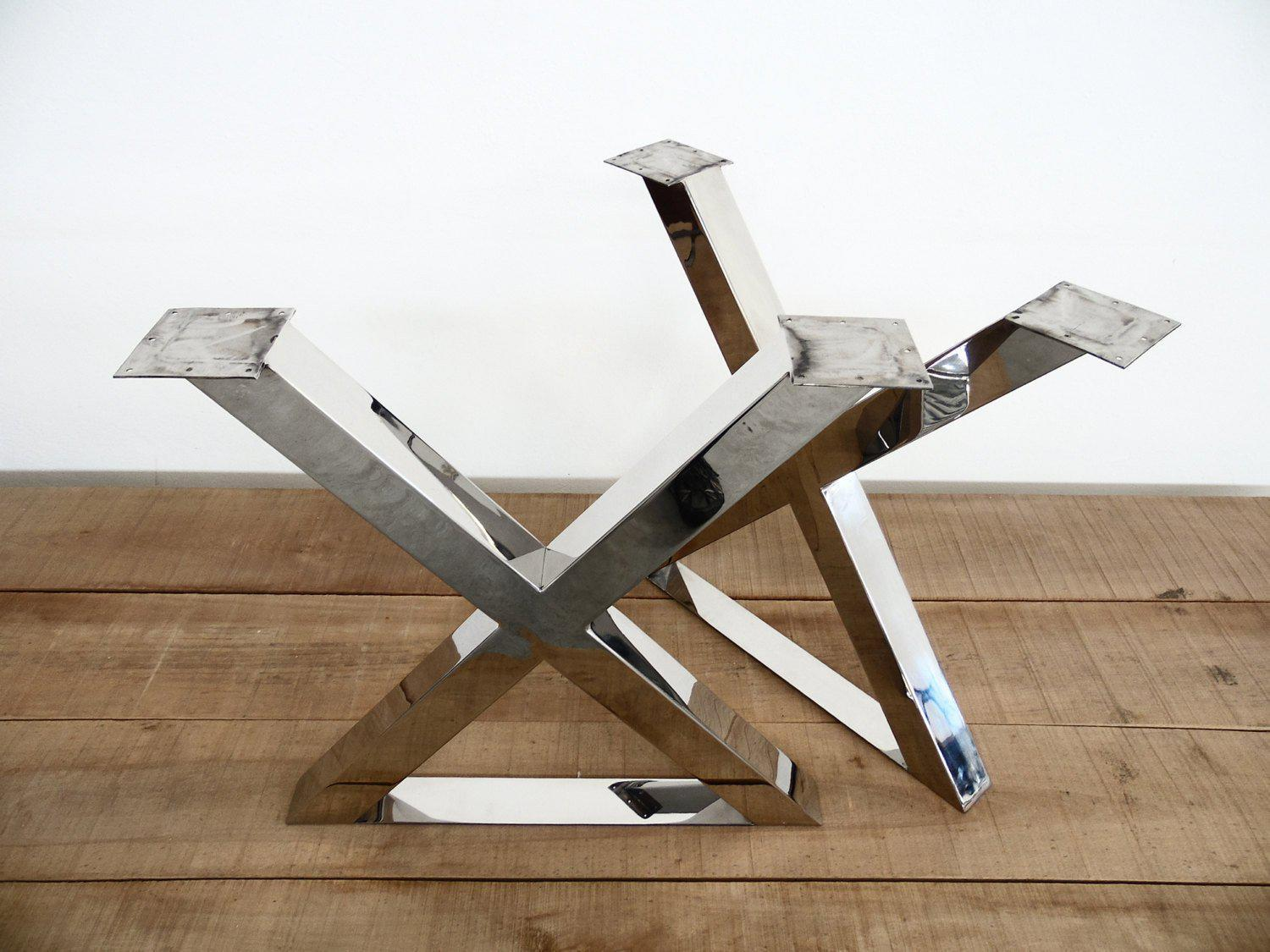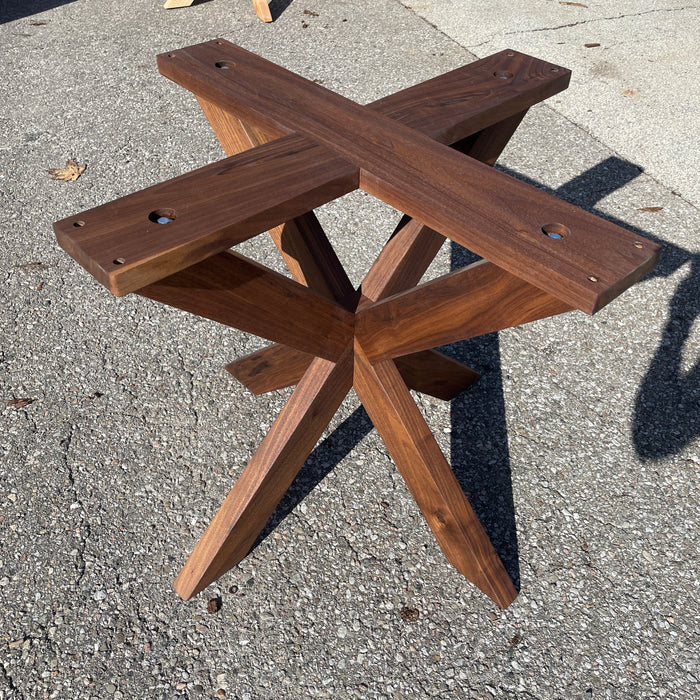Checking Out the Various Kinds Of Table Legs Wood for Your Eating Area
The option of dining table legs timber can profoundly influence both the useful and visual high qualities of your eating space. Strong timber options, such as oak and walnut, supply a classic look with unparalleled resilience, while engineered wood choices offer ingenious layouts that simulate the splendor of all-natural grains.
Strong Timber Options

Unlike engineered materials, solid wood is much less prone to bending and damages over time when effectively maintained. Each piece of solid wood is distinct, showcasing individual features that include to the beauty and personality of the eating table.
In addition, solid wood can be finished in many methods, varying from all-natural oils to discolored surfaces, permitting homeowners to individualize their furnishings to match their style. In recap, picking strong wood for dining table legs not just makes certain structural honesty yet likewise enhances the visual appeal of the eating location, making it a rewarding financial investment for any kind of home.
Engineered Wood Alternatives

Plywood, constructed from multiple layers of timber veneer, is secure and specifically solid, making it an outstanding choice for eating table legs. Its split composition permits it to endure modifications in humidity and temperature level much better than standard solid timber. MDF, on the other hand, provides a smooth surface for paint or veneering, enabling developers to achieve a sleek appearance while keeping structural stability.
When selecting engineered timber alternatives, it is vital to take into consideration the desired use and preferred aesthetic. These materials not only improve the capability of dining rooms yet additionally permit for greater design flexibility, ensuring that standard and modern designs can exist side-by-side sympathetically.
Reclaimed Timber Features
Redeemed wood offers a distinct blend of sustainability and character, making it a significantly preferred selection for eating table legs. Sourced from old barns, manufacturing facilities, and various other frameworks, redeemed wood embodies a history that brand-new products just can not duplicate. Each piece carries its very own tale, marked by distinct blemishes, knots, and differing grain patterns, which add to a table's special visual charm.
Along with its visual beauty, redeemed timber is an environmentally pleasant alternative. By repurposing previously used materials, it decreases the demand for brand-new lumber, hence aiding to minimize and conserve forests waste. This straightens with an expanding consumer choice for sustainable practices in furniture.
Additionally, redeemed timber is commonly much more durable than newly harvested timber because of its age. The natural drying process that redeemed wood undergoes outcomes in a denser and more powerful i loved this material, making it much less at risk to bending and splitting. This boosts the durability of eating tables, allowing them to hold up against the roughness of everyday use.
Softwood vs. Hardwood
When picking eating table legs, understanding the differences between softwood and hardwood is vital for attaining both visual and useful goals. They usually show an even more rustic look, making them appropriate for laid-back or country-style eating areas.
On the various other hand, woods, sourced from deciduous trees like maple, oak, and cherry, are renowned for their thickness, strength, and toughness. The detailed grain patterns and rich colors of woods give a innovative and timeless appeal, making them suitable for formal eating settings. While hardwoods often tend to be more costly and larger, their durability against damage commonly warrants the financial investment.
Eventually, the option in between softwood visit our website and hardwood for eating table legs should straighten with your layout vision, use requirements, and spending plan, ensuring that your eating space mirrors your individual style while continuing to be functional over time.

Therapies and coatings
The aesthetic appeal and longevity of table legs can be considerably boosted via numerous coatings and treatments. These procedures not just shield the timber from damages but also elevate its appearance, allowing it to complement varied indoor designs.
One typical treatment is discoloring, which penetrates the timber and enhances its natural grain while adding color. Discolorations provide a rich, stylish look, allowing homeowners to match their furnishings with existing style. Conversely, clear coatings such as polyurethane or varnish develop a protective layer without changing the timber's initial color, ensuring durability versus damage.
Additionally, natural oils, like tung or linseed oil, nurture the wood and offer a subtle shine, all while being environmentally friendly. These oils allow the surface area to take a breath, stopping dampness accumulation and potential bending.
For those seeking a rustic charm, weather-beaten or distressed surfaces can be related to create an aged appearance, including character to the item. Ultimately, the selection of treatments and finishes relies on personal choice, preferred aesthetic appeals, and the specific wood type, making it essential to take into consideration these elements when picking table legs for your room.
Final Thought
Finally, the selection of table leg products considerably affects both the functional and aesthetic facets of a dining area. Strong woods, crafted choices, and reclaimed alternatives each offer distinctive advantages, satisfying various choices and needs. Comprehending the differences in between softwoods and hardwoods, along with ideal finishes and treatments, enables educated decision-making. Inevitably, the choice of timber type must straighten with wanted design, longevity, and ecological considerations, enhancing the general eating experience.
The choice of eating table legs timber can greatly influence both the practical and visual high qualities of your eating space - Dining Table Legs Wood. Strong wood choices, such as oak and walnut, provide a classic look with unparalleled toughness, while crafted wood options provide innovative layouts that simulate the splendor of all-natural grains. Solid wood offers a timeless quality that can boost the overall layout of a dining area. Each item of strong timber is one-of-a-kind, showcasing specific attributes that view it now include to the appeal and personality of the dining table
Moreover, reclaimed timber is usually extra sturdy than freshly collected wood due to its age.